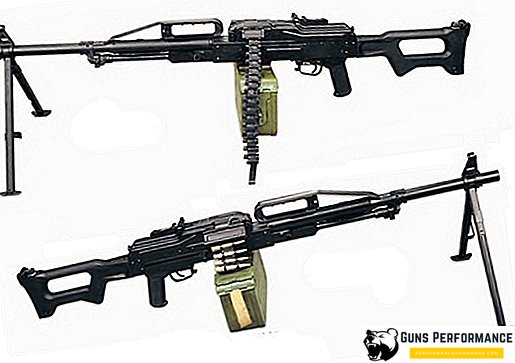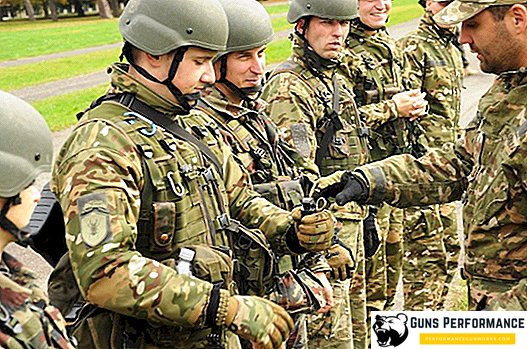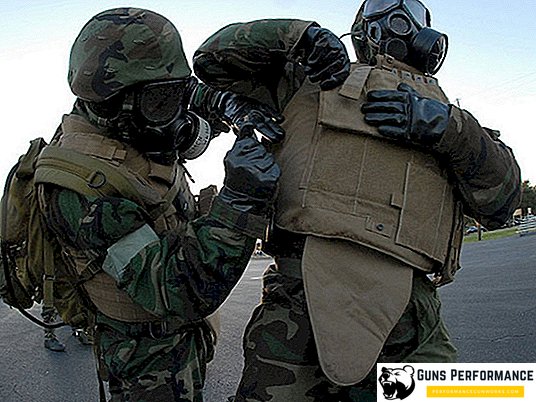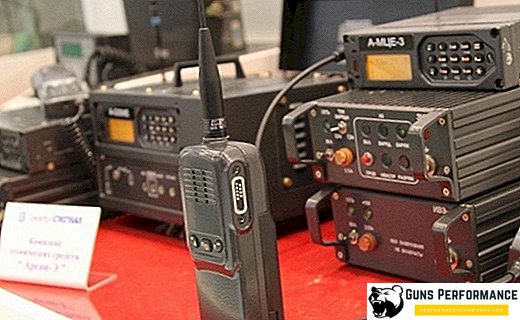In 2011, the Russian Federation launched an ambitious program of rearmament of the armed forces, which should be completed by 2020. Particular attention was paid to the modernization of the strategic forces (RVSN), the notorious nuclear shield, which is the key to Russia’s presence in the club of the most influential states of the world. It is not known how realistic the indicators of this program are, given the current sad state of the Russian economy.
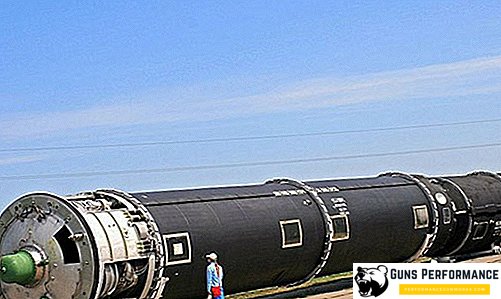
The military say that by 2020 the arsenal of strategic missiles will be updated by 98%. Replacing old and proven strategic intercontinental missiles, developed and manufactured in the USSR, causes fierce disputes both among experts and among ordinary citizens interested in this issue. Will the replacement be of equal value? Will the domestic retaliation weapon weaken? These questions seem particularly logical, given the active work on the missile defense system, which is underway in the United States.
But updating is an objectively necessary process: some (and quite a few) of the missiles were made in Soviet times and have already developed their own resources. In addition, some of the Soviet missiles today are obsolete, they should be replaced with modern ones. It cannot be said that nothing has been done so far: in recent years, dozens of new ballistic missiles have entered combat duty, for 2018 the ratio of new and old ballistic intercontinental missiles is 2/5. President Putin said that in 2018, the Russian Strategic Missile Forces should receive 50 of the latest ballistic missiles.
The issue of replacing the most powerful weapon of the Cold War - the heavy rocket R-36M2 (SS-18), which in the West for its characteristics is called the "Satan", as well as the ballistic missile UR-100H (it is called the "Stiletto") has not been resolved.
Modernization of the Strategic Missile Forces and its features
Discussions on the future of the Russian nuclear triad as a whole, as well as prospects for the development of the Strategic Missile Forces, do not abate. If it makes sense to increase the grouping of mine-based rockets? After all, the location of the rocket mines has long been known to the likely adversary, and the accuracy of modern weapons (both nuclear and conventional) is very high. Maybe it is better to arrange nuclear charges on mobile carriers? Or place them on sea-based missiles?
There is a truth in this: the location of mine installations has long been known, but it’s not so easy to hit a rocket in a mine. The current missiles can even start after a nuclear explosion that occurs at the very mouth of the mine. To make a large number of modern submarines carrying nuclear missiles is a rather complicated and expensive business.
The second dispute over the future of the Russian nuclear shield is the choice between liquid-fuel and solid-fuel missiles: both have advantages and disadvantages. Soviet intercontinental missiles were mostly liquid fuel, but it was not from a good life. In the USSR, there was simply no technology to create solid-fuel rockets of sufficient power.
Fuel-fired rockets have a higher power density, but they are more complex. In addition, the fuel components of these missiles are extremely toxic (heptyl is more toxic than hydrocyanic acid) and very aggressive. Americans have long abandoned liquid-fuel missiles.
A solid-fuel rocket is, in fact, a fuel bomb, but it is rather difficult to make. In this case, the mass thrown by such a rocket is usually less than that of a liquid fuel.
At present, the service life of old intercontinental missiles, which could carry several combat units at once, is gradually ending (R-36M - 10, and UR-100H - 6). These were liquid-fuel rockets, which today replace the solid-fuel Topol (1 charge) and Yars (3 charges). These rockets are easier to manufacture and maintain.
According to the SVN-3 treaty, Russia has the right to 800 deployed and non-deployed carriers of nuclear weapons and 1,500 nuclear charges. Are these indicators achievable with the new technique? At the beginning of this year, 760 nuclear charges were placed on old intercontinental ballistic missiles (ICBMs).
Particularly acute is the question of replacing the R-36M Voyevoda missiles, each of which could carry ten warheads to the target. It is planned to replace it with the Sarmat heavy-duty liquid-fuel rocket, which is due to appear by 2018 (experts believe the Sarmat will have a 2020 deadline). The Southern Machine-Building Plant (Dnepropetrovsk, Ukraine) refused warranty service of the R-36M. So the question about these missiles really hung in the air, and requires an immediate solution.
Rocket "Sarmat"
Work on this rocket began at the end of the last decade. There is very little data on this product, the characteristics are not yet known: firstly, all the works are classified, and secondly, they are still ongoing.
The Sarmat rocket, which is to replace the Voivode, is also a silo-based liquid fuel rocket. The development is being carried out at the Makeev Center - in one of the recognized Russian rocket centers, which specializes in the development of liquid-fuel rockets. The technical assignment for Sarmat was approved at the end of 2011. In the middle of 2018, it was reported that the flight tests of the rocket would begin in early 2018.
It is planned that the rocket will be on duty in combat units located in the Krasnoyarsk Territory and the Orenburg region.

To reduce the cost of one rocket, the developers suggested using the already tested components and elements from serial rockets to the maximum.
The problem may be that the Makeyev SRC, although it has experience in the development of liquid-fuel rockets, but earlier they were missiles for submarine cruisers, having a much smaller starting weight.
The starting mass of the new Sarmat rocket should be about 100 tons, the weight thrown by it will reach five tons (write about 4350 kg). The range of the rocket is likely to exceed 11 thousand kilometers. That, at least, was stated by representatives of the Ministry of Defense. Western experts agree on these characteristics in general terms.
Also, the leadership of the strategic missile forces has already stated that Sarmat will not yield in its effectiveness to the famous Satan. Even more: a new, more advanced warhead guidance system should make this missile even more deadly than its predecessor.
Judging by the scraps of information that is today, we can say the following. Most likely, the new rocket "Sarmat" will have two stages and a stage of breeding warheads, each of the blocks will be induced individually. The engines of both stages of the new rocket will be sunk in tanks with fuel. Separation of the steps of the "Sarmatian" will be carried out using piroshpangoutov. The deployment of warheads at the head of the rocket is likely to be carried out in a manner that is classic for Makeev’s SRC: back to the direction of flight. The step of breeding warheads is also likely to be liquid fuel.
The hypersonic units that will be used on the new rocket are likely to be identical to those installed on the Yars, Topol and Bulava missiles. This will help the new missile to overcome modern missile defense. We are talking about elements of space-based missile defense, which are currently prohibited by international treaties, but may well appear in the near future.
There is information that the Sarmat plan to install a liquid-fuel engine from the B-15 SLMM R-29RMU2 Sineva missile, and a dilution level for the warheads from the B-17 SLBM rocket (Bark). True, there is another information: for the engine of the first stage will be used the elements of the power plant "Governor". True, they were made in Dnepropetrovsk, who will make them today is unknown.

For the placement and launch of rockets will be used mine installations, which were previously used for old heavy fuel oil missiles RS-20 and RS-18. But at the same time, the military have already announced that the old missile mines will be seriously modernized. First of all, the modernization will affect the protection of the mine installation from damage by nuclear and conventional weapons. We are talking about the so-called passive anti-missile defense, which will help to increase the security of rocket mines several times.
Here you can recall the resumption of work on the complex of active protection (KAZ) "Mozyr", which was developed in the early 80s of the last century. Its effect was to shoot at high speed a whole cloud of metal arrows or balls towards a flying object (the same warhead). Are these works not connected with the development of the Sarmat missile system? Fully work on the "Mozyr" were stopped only in the late 90s, while this installation already knew how to shoot down models of military units.
In the Makeyev Center, they stated that their rocket could launch even after a nuclear strike and deliver an accurate strike several thousand kilometers away, at the other end of the world.
It is likely that the control and guidance system of the new rocket will be of the inertial type, the gyroscope for measuring the angular velocity in 2012 was developed at the SPC for automatics and instrument engineering.
More information on the new rocket, we should get in the coming years, now we can only guess. True, it is not too clear how you can place all the warheads from the "Governor" on a rocket, which has a mass of two times less.



